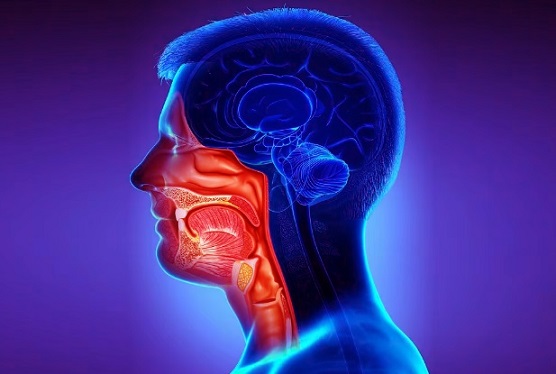Nikhil Prasad Fact checked by:Thailand Medical News Team Jan 22, 2025 10 months, 3 weeks, 3 days, 11 hours, 4 minutes ago
Medical News: Head and neck squamous cell carcinoma (HNSCC) ranks among the top six most common cancers worldwide, with more than 680,000 new cases diagnosed annually. Despite advancements in medical research, the five-year survival rate for this aggressive disease remains stagnant at approximately 50 percent. This stark reality has prompted researchers to explore innovative diagnostic and therapeutic strategies to improve patient outcomes. One such area of focus is the molecular biomarker SERPINE1, which may hold the key to new treatments and better prognostic tools for HNSCC.
 The Role of SERPINE1 in Head and Neck Squamous Cell Carcinoma
SERPINE1: A Promising Target
The Role of SERPINE1 in Head and Neck Squamous Cell Carcinoma
SERPINE1: A Promising Target
SERPINE1 is a serine protease inhibitor known to regulate plasminogen activation and tissue remodeling. While its role in cancers such as breast, colon, and pancreatic cancers has been extensively studied, its implications in HNSCC have remained less understood. Researchers from Beijing Tongren Hospital and Thorgene Co. Ltd. in China have collaborated to investigate the prognostic significance and therapeutic potential of SERPINE1 in HNSCC. Their findings suggest that this molecule’s elevated expression could serve as a marker for poor prognosis, particularly in HPV-negative HNSCC.
This
Medical News report dives into the details of the study, examining how SERPINE1 expression correlates with survival rates, immune infiltration, and drug sensitivity, as well as its potential as a therapeutic target.
Key Findings from the Study
The researchers utilized data from The Cancer Genome Atlas (TCGA) and Gene Expression Omnibus (GEO) to analyze the expression levels, genetic variations, and methylation patterns of SERPINE1 in HNSCC compared to normal tissues. Their results revealed several critical insights:
Expression and Prognostic Significance:
-SERPINE1 was significantly overexpressed in HNSCC tissues compared to adjacent normal tissues.
-Elevated levels of SERPINE1 were associated with poorer overall survival (OS) and disease-specific survival (DSS), particularly in HPV-negative cases.
Immune Microenvironment:
-The expression of SERPINE1 was positively correlated with immune infiltration by eosinophils, macrophages, and gamma delta T cells. Conversely, cytotoxic T cells and B cells showed a negative correlation.
-Tumors with high SERPINE1 expression demonstrated higher stromal scores, indicating a potential role in creating an immunosuppressive tumor microenvironment.
Genetic and Epigenetic Characteristics:
-Copy number variations (CNVs) in SERPINE1 primarily involved homologous amplifications, which were positively correlated with its overexpression.
Methylation analysis revealed an inverse relationship between methylation levels and SERPINE1 expression, with higher methylation correlating with better survival outcomes.
&
amp;nbsp;
Drug Sensitivity:
Drug sensitivity analysis identified dasatinib and docetaxel as potential therapeutic agents showing a negative correlation with SERPINE1 expression.
SERPINE1’s role in chemoresistance highlights its potential impact on treatment outcomes, particularly in resistance to cisplatin-based therapies.
Pathway Enrichment and Protein Interactions
The study’s enrichment analysis revealed that SERPINE1 is involved in key biological pathways, including:
-Extracellular matrix organization and proteoglycan synthesis.
-Regulation of endopeptidase activity and angiogenesis.
-AGE-RAGE signaling pathways linked to tumor growth in diabetic complications.
Protein interaction analysis identified several genes interacting with SERPINE1, such as TGFB1, FN1, and MMP1, which play critical roles in cell adhesion, migration, and invasion - key processes in cancer progression.
Clinical and Immunohistochemical Observations
Immunohistochemical analysis further validated the overexpression of SERPINE1 in HNSCC tissues. Staining intensity and distribution correlated with the aggressive nature of the disease. However, no significant differences were observed concerning patient age, gender, or tumor stage.
Implications for Future Research and Treatment
The study underscores SERPINE1’s dual role in promoting tumor progression and influencing the immune microenvironment. Its overexpression is particularly relevant in HPV-negative HNSCC, a subtype often characterized by lower immune infiltration and poorer responses to immunotherapy.
The researchers emphasize the need for further studies to explore:
-The molecular mechanisms underlying SERPINE1’s role in tumor immunity.
-Its interactions with immune checkpoint inhibitors like PD-1 and PD-L1.
-The development of targeted therapies aimed at mitigating its effects.
Conclusion
The findings of this comprehensive study highlight SERPINE1 as a significant prognostic marker and potential therapeutic target in HNSCC. Its overexpression correlates with poor survival outcomes and alterations in the immune microenvironment, making it a critical molecule for future cancer research. Targeting SERPINE1 could pave the way for novel therapeutic approaches, especially for patients with HPV-negative HNSCC who face limited treatment options.
The study findings were published in the peer-reviewed journal: Cancer Medicine.
https://onlinelibrary.wiley.com/doi/10.1002/cam4.70605
For the latest Cancer News, keep on logging to Thailand
Medical News.
Read Also:
https://www.thailandmedical.news/news/doctors-from-belgium-explore-strategies-to-overcome-resistance-in-head-and-neck-cancer-treatments
https://www.thailandmedical.news/news/air-pollution-found-to-trigger-higher-occurrences-of-head-and-neck-cancer
https://www.thailandmedical.news/news/new-clues-to-cancer-growth-sar1a-s-role-in-head-and-neck-tumors
https://www.thailandmedical.news/news/targeting-tgf-beta-pathway-shows-promise-for-head-and-neck-cancer
https://www.thailandmedical.news/news/californian-study-finds-that-cannabis-significantly-increases-risk-of-head-and-neck-cancer
https://www.thailandmedical.news/news/new-breakthroughs-in-diagnosing-hpv-positive-head-and-neck-cancer
https://www.thailandmedical.news/news/diffusing-alpha-emitting-radiation-therapy-dart-shows-promising-results-for-skin-and-head-and-neck-cancers
https://www.thailandmedical.news/news/cancer-news-university-of-pennsylvania-scientists-discover-that-lidocaine-is-able-to-kill-cancer-cells-and-can-be-used-to-treat-head-and-neck-cancers
